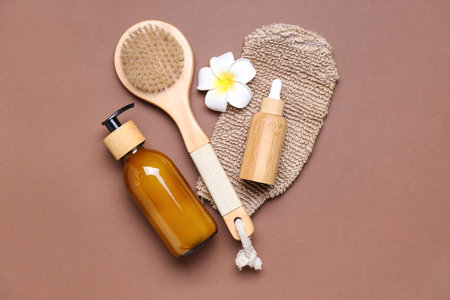Introduction to At-Home Beauty Devices and Sensitive Skin
In recent years, at-home beauty devices have surged in popularity across the UK, offering innovative solutions for skincare enthusiasts eager to achieve salon-quality results from the comfort of their own homes. From LED light therapy masks to microcurrent facial toners, these gadgets promise visible improvements with convenience and cost-effectiveness. However, for individuals with sensitive skin—a common concern among Britons—the adoption of these technologies can present unique challenges. Sensitive skin often reacts adversely to harsh treatments, leading to redness, irritation, or even allergic responses. As a result, those with delicate complexions must be especially discerning when selecting at-home devices, prioritising gentleness and safety above all else. Understanding the intersection between advanced beauty tech and sensitive skin is crucial for making informed decisions that align with both aesthetic goals and skin health.
Key Considerations for Sensitive Skin Users
If you have sensitive or reactive skin, selecting an at-home beauty device requires extra care. UK dermatologists and skincare professionals highlight several key considerations to ensure that your device enhances your routine without causing irritation or flare-ups. Below, we provide a detailed analysis of what to look out for, along with expert-backed advice tailored for the UK market.
1. Device Material and Surface Texture
Materials in direct contact with the skin can trigger reactions if not suitable for sensitive types. Look for hypoallergenic surfaces—such as medical-grade silicone—recommended by NHS dermatology experts for their non-porous and gentle properties. Avoid devices with rough edges or abrasive attachments.
Comparison Table: Device Materials
| Material | Sensitivity Suitability | UK Expert Comment |
|---|---|---|
| Medical-grade Silicone | Excellent | Gentle, easy to clean, rarely causes allergies |
| Plastic (ABS) | Good | Generally safe, but check for BPA-free certification |
| Metal Alloys | Variable | Nickel-free is essential; otherwise may cause irritation |
| Abrasive Bristles/Pads | Poor | Often too harsh; avoid unless specifically designed for sensitive skin |
2. Adjustable Intensity and Settings
Devices with customisable intensity are highly recommended by UK skincare therapists. Being able to start on the lowest setting allows gradual acclimatisation, reducing risk of redness or stinging—a common issue flagged in British Skin Foundation guidance.
3. Patch Testing and Allergy Awareness
The National Eczema Society stresses the importance of patch testing any new device on a small area before full use. This step helps identify potential allergic reactions, especially when using LED masks or microcurrent devices.
4. Aftercare and Product Compatibility
Sensitive skin often reacts not only to devices but also to the aftercare products used alongside them. Opt for fragrance-free and alcohol-free serums or gels, as recommended by Boots UK pharmacists, to minimise irritation post-treatment.
Quick Checklist: What to Prioritise When Buying At-Home Devices in the UK
- Hypoallergenic, smooth-contact materials
- Multiple settings for intensity adjustment
- Clear user instructions and UK/EU safety certifications (e.g., CE marking)
- Compatibility with gentle, fragrance-free skincare products
- Easily cleaned surfaces to prevent bacterial build-up—a key concern in damp British bathrooms!
- Positive reviews from UK-based users with similar skin concerns
By carefully evaluating these factors and heeding UK-specific professional advice, you can choose at-home beauty devices that nurture rather than aggravate your sensitive skin.

3. Top UK-Recommended Devices for Sensitive Skin
When it comes to at-home beauty devices, those with sensitive skin must tread carefully. British dermatologists and skincare experts consistently emphasise the importance of gentle, clinically tested technology to avoid irritation or flare-ups. Below is a curated selection of devices frequently recommended in the UK for their safety, efficacy, and suitability for delicate skin types.
Facial Cleansing Brushes
Traditional cleansing brushes can be too abrasive for sensitive skin. However, newer-generation sonic cleansing tools with ultra-soft silicone bristles are favoured by UK specialists for their gentle yet effective cleansing action. These devices help remove impurities without harsh scrubbing, reducing the risk of redness or micro-tears.
| Device Name | Key Features | UK Expert Notes |
|---|---|---|
| FOREO LUNA™ 4 | Soft silicone touchpoints; adjustable intensity; waterproof | Highly rated for its ultra-gentle vibration and hygienic design |
| Magnitone London XOXO | Triple texture zones; USB rechargeable; suitable for daily use | Praised for being non-abrasive and easy to clean |
LED Light Therapy Masks
LED masks, particularly those offering red and near-infrared light, are well-regarded by UK dermatologists as non-invasive options that soothe inflammation and promote healing. The technology delivers therapeutic wavelengths without heat or harsh chemicals—ideal for sensitive complexions prone to redness or rosacea.
| Device Name | Main Benefits | Expert Recommendation |
|---|---|---|
| CurrentBody Skin LED Mask | Red & near-infrared LEDs; flexible silicone fit; 10-minute sessions | Cited for clinical backing and excellent results on sensitive skin |
| MZ Skin Light-Therapy Golden Facial Treatment Device | Five light settings including calming red; adjustable fit | Favoured for customisable programmes tailored to sensitivity levels |
Microcurrent Tools
Microcurrent devices offer a subtle lift and tone by delivering low-level electrical currents. For those in the UK with sensitive skin, experts recommend models with adjustable intensities to ensure treatments remain comfortable and non-irritating. These tools support skin vitality while minimising potential side effects.
| Device Name | Main Features | Sensitive Skin Suitability |
|---|---|---|
| Nuface Mini+ Facial Toning Device | Three intensity levels; compact design; automatic shut-off | Widely recommended due to its gentle settings and proven safety profile |
A Final Note from UK Dermatologists
The consensus among British skincare professionals is clear: Always patch-test new devices, follow manufacturer instructions meticulously, and prioritise products with strong clinical validation. Investing in the right tool can deliver salon-quality results at home, provided you choose wisely and care for your sensitive skin with patience and consistency.
4. Expert Tips for Safe At-Home Use
When it comes to integrating at-home beauty devices into your skincare regimen—especially if you have sensitive skin—UK dermatologists and skincare experts emphasise a careful, step-by-step approach. To help ensure optimal results with minimal irritation, here are essential expert-backed recommendations:
Patch Testing: The Non-Negotiable First Step
Before applying any new device broadly, always conduct a patch test. According to NHS guidelines and many UK professionals, use the device on a discreet area (such as behind your ear or inner forearm) and wait 24-48 hours to monitor for adverse reactions like redness, itching, or swelling.
Incorporation into Your Routine
| Device Type | Recommended Frequency | Initial Duration | Notes for Sensitive Skin |
|---|---|---|---|
| LED Light Therapy Masks | 2-3 times per week | 10 minutes | Start with shorter sessions; avoid if experiencing active flare-ups |
| Sonic Cleansing Brushes | 1-2 times per week | 1 minute | Choose ultra-soft bristles; do not press hard on the skin |
| Microcurrent Devices | 2-3 times per week | 5 minutes | Use on clean, moisturised skin; skip if irritated or broken skin is present |
| At-Home IPL Hair Removal | Every 2 weeks (initially) | – | Avoid over-treating the same area; check device suitability for your skin tone and sensitivity level |
Selecting Supporting Products: Less is More
The British Association of Dermatologists suggests pairing devices with gentle, fragrance-free cleansers and moisturisers. Avoid actives like retinoids or acids immediately before and after device use to reduce the risk of cumulative irritation.
Monitor and Adjust as Needed
If you notice persistent redness or discomfort, pause usage and consult a local skincare professional or pharmacist. As many UK experts note, consistency is key—but so is listening to your skin’s feedback.
Cultural Insight: British Sensitivity to Skin Health Advice
The UK public values evidence-based guidance from trusted sources such as the NHS and local pharmacists. Always look for devices tested to UK/EU safety standards (CE marking) and consult with a healthcare provider if unsure about suitability for your skin type.
5. What to Avoid: Potential Risks and Unsuitable Devices
When it comes to at-home beauty devices for sensitive skin, a cautious approach is essential. Not all gadgets on the market are suitable, and some can exacerbate irritation or even trigger flare-ups. Below, we explore device features and types that UK dermatologists and real users agree should be handled with care—or avoided altogether.
High-Intensity Devices: A Red Flag for Sensitive Skin
Devices that utilise high-intensity energy, such as certain laser and IPL (intense pulsed light) tools, often pose significant risks for those with delicate skin barriers. Dr. Rachel Evans, a consultant dermatologist in London, warns, “Overly aggressive treatments can disrupt the skin’s protective layer, leading to redness and prolonged sensitivity.” Many UK users echo these concerns, citing increased discomfort after using high-powered tools designed for professional results at home.
Devices Containing Harsh Exfoliating Mechanisms
Microdermabrasion gadgets and strong sonic cleansing brushes are frequently marketed for deep cleaning or resurfacing. However, their abrasive action can be too harsh for sensitive skin types. “I tried a popular microdermabrasion device last winter,” shares Leanne from Manchester, “and ended up with sore patches that took weeks to heal.” UK clinicians typically recommend gentler alternatives or limiting use to once weekly at most.
Comparison Table: Device Types That May Be Problematic
| Device Type | Potential Issues | User Feedback (UK) |
|---|---|---|
| High-Intensity IPL/Laser | Irritation, redness, burns | Reported increased sensitivity & patchy results |
| Microdermabrasion Tools | Abrasions, dryness, inflammation | Sore skin; recovery takes longer |
| Sonic Cleansing Brushes (Firm Bristles) | Over-exfoliation, microtears | Redness after regular use; better with soft bristles |
Chemical-Based Devices: Proceed With Caution
Certain home-use devices pair electrical stimulation with chemical-infused pads or serums. For sensitive skin, these chemicals—especially acids or retinoids—can provoke burning sensations or allergic reactions. Clinicians suggest patch-testing any new product in tandem with your device before widespread use.
Expert Tips: What to Look for Instead
- Select devices with adjustable intensity settings; always start on the lowest setting.
- Avoid tools that combine physical abrasion with chemical exfoliants unless specifically labelled safe for sensitive skin.
- Consult a dermatologist if unsure about a device’s compatibility with your skin type.
The consensus among UK experts is clear: those with sensitive skin should steer clear of overly aggressive at-home treatments. Prioritise gentle technologies and listen to user feedback within the UK community to ensure both safety and effectiveness.
6. Complementary UK Skincare Products and Aftercare
After using at-home beauty devices, especially on sensitive skin, the right aftercare is crucial to enhance results and minimise irritation. UK experts recommend a careful selection of serums, creams, and calming treatments that are readily available across British retailers. These products help soothe delicate skin and support optimal recovery, ensuring your at-home device experience is both safe and effective.
Pairing Your Device with the Right Aftercare
For individuals with sensitive skin, it’s essential to choose formulas that are fragrance-free, hypoallergenic, and dermatologically tested. Post-treatment skin can be more reactive, so look for ingredients such as niacinamide, ceramides, aloe vera, and panthenol—all widely endorsed by UK dermatologists for their calming properties.
Recommended Product Categories
| Product Type | Recommended Ingredients | Popular UK Brands/Examples |
|---|---|---|
| Soothing Serums | Niacinamide, Hyaluronic Acid, Centella Asiatica | The Ordinary Niacinamide 10% + Zinc 1%, La Roche-Posay Toleriane Ultra Dermallergo Serum |
| Moisturising Creams | Ceramides, Squalane, Glycerin | CeraVe Moisturising Cream, Aveeno Calm & Restore Oat Gel Moisturiser |
| Calming Treatments | Aloe Vera, Panthenol (Vitamin B5), Allantoin | Eucerin Aquaphor Soothing Skin Balm, Pai Skincare Instant Kalmer Serum |
| SPF Protection (Daytime) | Zinc Oxide, Titanium Dioxide (Mineral Sunscreens) | Altruist Dermatologist Sunscreen SPF 30/50, La Roche-Posay Anthelios Mineral One SPF 50+ |
Expert Tips for Sensitive Skin Aftercare in the UK Climate
- Avoid actives immediately post-treatment: Steer clear of strong retinoids or acids for 24-48 hours after device use to prevent overstimulation.
- Patch test new products: Always trial a small amount before full application if introducing a new serum or cream alongside your device routine.
- Hydration is key: The often unpredictable British weather can exacerbate dryness; layer lightweight hydrating serums under richer creams for best results.
- Sun protection: Even on cloudy days, post-device skin needs broad-spectrum SPF to protect against UV sensitivity—an essential step in any UK skincare regime.
Your Local Pharmacy or High Street Options
You’ll find most recommended products at major UK outlets like Boots, Superdrug, or online via Cult Beauty and Lookfantastic. Many brands offer travel sizes perfect for first-time testing. Remember to check for NHS-approved products if you have extremely sensitive or eczema-prone skin.
7. Conclusion: Expert Takeaways and Making an Informed Choice
As we reach the end of our exploration into at-home beauty devices suitable for sensitive skin, it’s clear that UK experts emphasise a cautious yet optimistic approach. Here’s a summary of the main takeaways to guide your decision-making process, ensuring you get salon-level results in the comfort of your own home without compromising skin health.
Expert-Recommended Key Considerations
| Aspect | Expert Guidance |
|---|---|
| Device Type | Choose devices with adjustable settings specifically designed for sensitive skin (e.g., lower intensity modes). |
| Patch Testing | Always perform a patch test before using any new device to minimise risk of irritation. |
| Certifications & Safety Marks | Look for CE markings and relevant UK/EU certifications to ensure compliance with safety standards. |
| Ingredients & Materials | Opt for hypoallergenic materials and avoid products containing known irritants. |
| User Reviews (UK-Based) | Consult UK-specific forums and user reviews to gauge real-life experiences from those with similar skin concerns. |
| Professional Advice | If in doubt, consult a qualified dermatologist or skincare professional familiar with UK climate and sensitivities. |
The Balance Between Innovation and Caution
UK dermatologists agree that while technology has advanced significantly, not every trending device is suitable for delicate or reactive skin types. Devices such as LED masks, ultrasonic cleansers, and gentle microcurrent tools receive the most positive endorsements when used according to manufacturer guidelines. Importantly, they stress that more isn’t always better—overuse can exacerbate sensitivity rather than improve it.
Achieving Salon-Level Results at Home—Safely
The promise of professional-quality outcomes is realistic if consumers prioritise safety, quality, and their own unique skin needs. Investing in reputable brands and following expert protocols can help users achieve radiant results without trips to the clinic. A step-by-step routine that includes gentle cleansing, appropriate device usage, moisturising, and sun protection forms the cornerstone of any successful at-home regimen for sensitive skin.
Your Next Steps
If you’re considering adding an at-home beauty device to your skincare routine, use the checklist above as your starting point. Remember: patience, research, and listening to your own skin are key. By combining British expert advice with careful product selection, you’ll be well-equipped to enjoy effective treatments tailored to sensitive skin—right from your living room.


